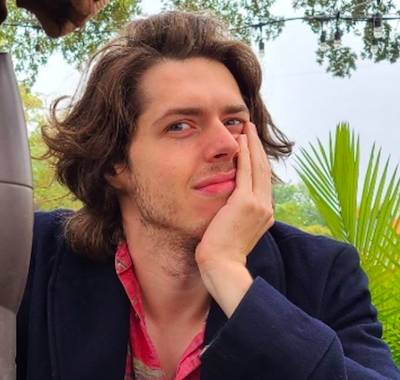“Beetlejuice Beetlejuice” Editor Jay Prychidny on the Gospel of Ghoulish Pacing
Beetlejuice Beetlejuice isn’t a rehash of the past. Director Tim Burton revisits familiar characters and locations to tell a new story about aging, family, and regaining a sense of self that can get lost along the way through life’s trials and tribulations. It’s not just a nostalgic sequel but another personal adventure from the mind of one of contemporary cinema’s most singular filmmakers.
As usual with a Burton film, there are a lot of forces at play, emotional and supernatural. The story of Beetlejuice Beetlejuice seems straightforward and simple, but it’s a complicated beast. Lydia Deetz (Winona Ryder) returns home with her family, including her daughter Astrid (Jenna Ortega); Beetlejuice (Michael Keaton) still creepily pines over Lydia as he’s hunted by his ex-lover Delores (Monica Bellucci); dead cop Wolf Jackson (Willem Dafoe) is thrown into the mix to keep the living and the dead separate; and the story goes on with Lydia’s sleazy partner (played by Justin Theroux), a love interest for Astrid, and Lydia’s mother, Delia (Catherine O’Hara), on an artistic and spiritual journey.
In other words, the sequel is a lot on paper, but in the hands of Wednesday editor Jay Prychidny, all the threads come together and make for a blast at the movies. It was far from an easy task, though, bringing together all the narrative threads, gags, and stakes on display in Beetlejuice Beetlejuice. Prychidny tells The Credits how he accomplished such a creative feat. Fair warning, spoilers below!
Tim Burton purposefully didn’t rewatch the original film. Did you? How’d you want to push that free-wheeling style?
I’d like to think I pushed the style further than the original, just infusing the editing with more energy and a manic feeling. Definitely Tim’s viewpoint was to not rewatch the original. I think that inspired me, but I’m so familiar with it. It was my favorite movie as a kid, so I’ve seen it hundreds of times. I do just have a core memory of what’s going on in that movie, so I didn’t need to watch it. But his energy was like, “We are not trying to copy the original.” He wanted to craft the world of the sequel from a more emotional and instinctual place of what he thought that whole world was and what it meant to him, his emotional memory of the first one, as opposed to literally copying things from the first one.
The sequel is also much more musical, especially the big finish. How did it bring all those elements together?
Yeah, that was really wild. That was definitely the most difficult segment because it was so strange. Another example is where there were [dialogue] scenes all written in that church. At one point, Tim just decided that they’re all going to be singing “MacArthur Park,” and so that change did get into the script. Getting those script changes was utterly bizarre because you’re just going page after page, and all it is a transcription of the song. Page after page, it’s just all of the lyrics of the song written out. It’s just like, what is this?
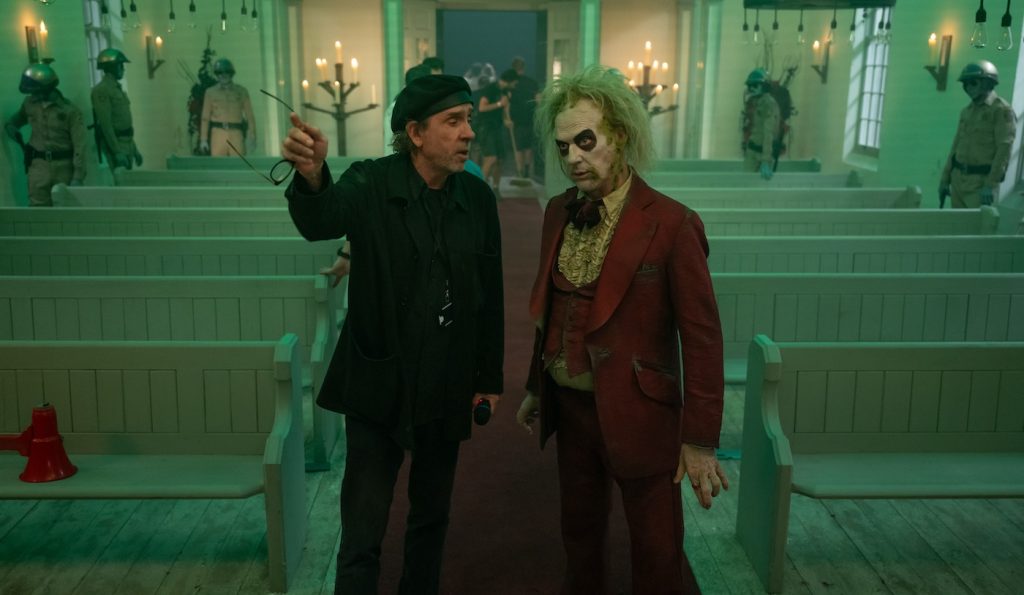
How’d the dailies look?
On the day they just ran the song, different parts of the song, they’d have the actors just lip sync it all. And it’s like, well, how will this go together? It’s the actor’s lip-syncing to different parts of the songs. But Tim’s idea was that it didn’t matter. They just rolled the camera and just sang the song, right? Different sections, but they go through the whole section of the song and it’s like, “Well, but you can’t just use this whole thing. What is this?” But Tim’s idea was like, “Oh, well, it doesn’t matter. You just use that section for as much as you want, and then you can go to another section and then another section. You don’t have to be tied to the song.” [Laughs]
Is that even more difficult than it sounds?
At the time, I was like, “What are you talking about? What do you mean?” [Laughs] You can’t just go from one part of the song to another because, musically, it has to make sense. So, that was a bizarre struggle. You just want to be on the characters for the parts that are good. You don’t want just to be singing endlessly. It was just an insane challenge.
Not to mention, all the story resolution is needed there, right?
Yeah, amazingly, it worked. There were definitely a lot of questions about that sequence from producers and the studio. Is this crazy? Because it just keeps going. We did labor over that as well, should this be shorter? Because there would’ve been ways to cut it down. Ultimately, Tim just thought that we just have to go for broke. We just have to do it all.
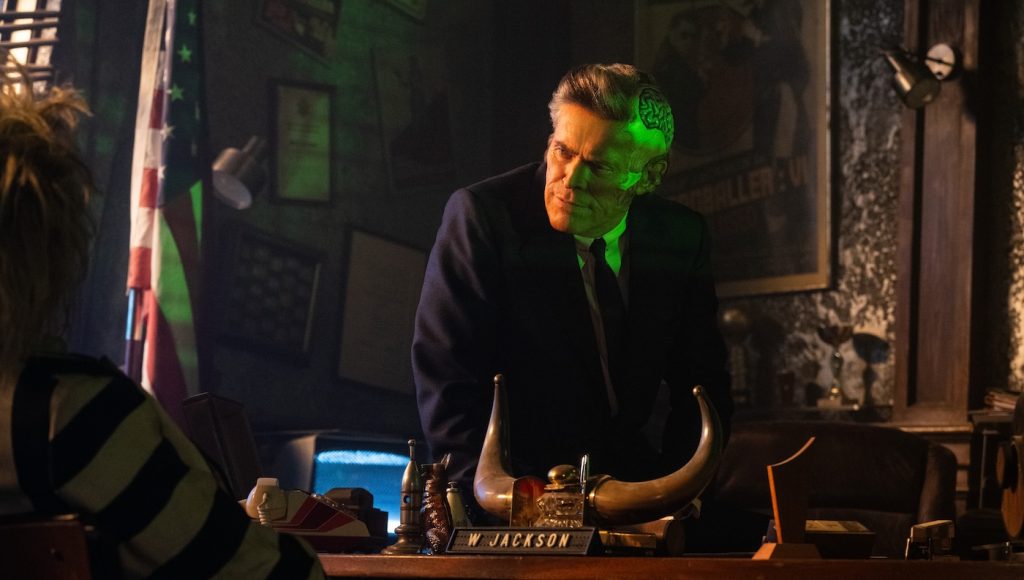
It’s a bigger ensemble and story this time around. There are B and C storylines, with the netherworld cop, Wolf Jackson (Willem Dafoe), and Beetlejuice’s ex, Delores (Monica Belluci). How much experimentation did it take to bring all those threads together?
The biggest red flag of the movie was how disjointed it was, how disjointed it felt, for sure. There are so many characters. It just had that feeling of jumping around to different storylines, which is very, I don’t know, you don’t really get a proper pace or flow or rhythm to it. So, definitely a lot of the work early on was to just find ways that you just don’t cut to a different scene. You try to find the connection, so one scene drives to the next, to drive to the next.
Ultimately, how’d you get that pace right? It’s not disorienting at all.
One of the benefits of editing during shooting is Tim looking at things and talking about them. We can start to see how we could shoot something new, transition pieces that connect this scene to the next one. It made it all feel more interconnected and gave it some forward momentum. It’s just the nature of the beast when you have that many characters, you have to drop off a certain storyline to focus somewhere else eventually. I mean, that’s always going to be what it is, but I’m definitely trying to make it seem as much a single driving point as possible. You’ll never do that, but you try to do that as much as you can.
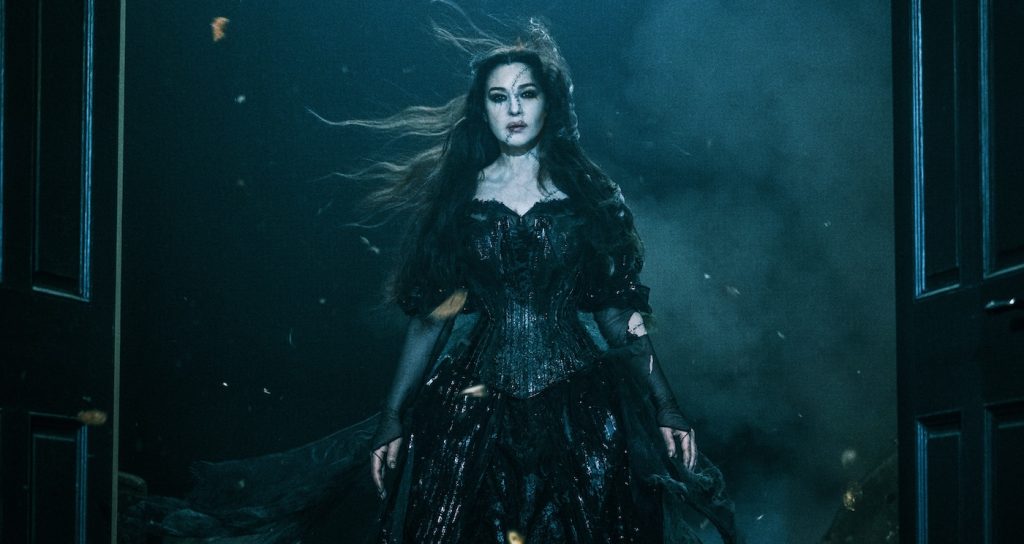
Was there more of Delores in an earlier cut?
No. It was actually the opposite as we filmed more of her to put into the film. There were a couple of them. Bob’s death scene was a new scene that was added to give her more villainy and give her something really evil to do. And then there were just a couple more moments that we went and filmed to up her character more.
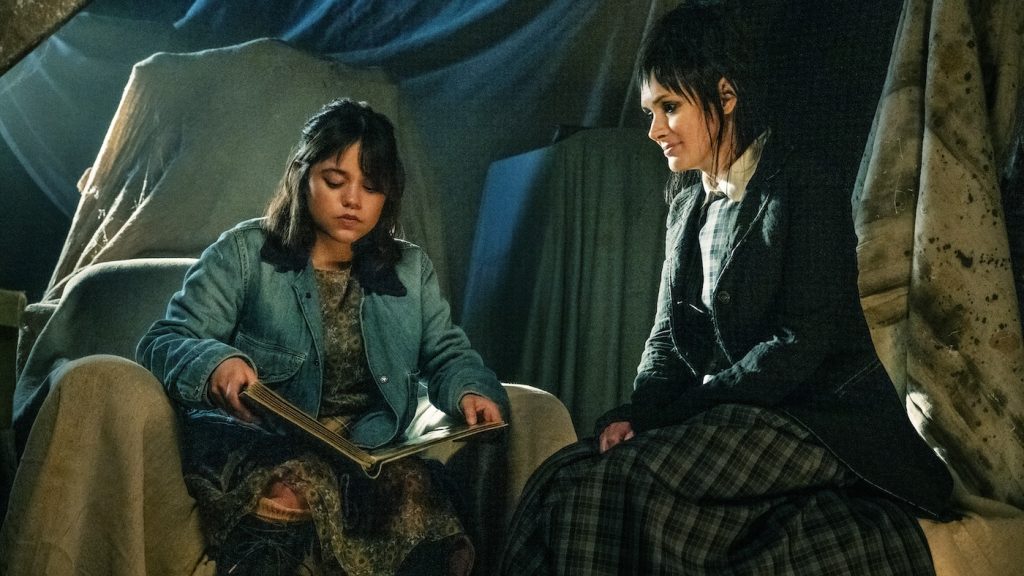
The mother-daughter storyline is the heart of the movie. It feels personal to Tim Burton. Were certain deeply personal qualities that really spoke to you when editing the film?
It is fascinating. The more you know Tim, the more you see how many things he puts in the movie are very personal to him. It’s hard to see that because everything’s just so wild and crazy. A lot of these things he puts in do have a resonance for him. Just a very benign example, at the end of the movie, they go to Dracula’s Castle in Romania, which on Wednesday, he shot in Romania. Tim’s been to Dracula’s Castle several times. Those little individual touches are peppered in the entire film. I think that creates a sense of a personal piece of work, even though it is a big mainstream film.
Well said. You feel it when Lydia and Astrid are in the attic, talking about the horror movies they watched as a family together. How was cutting that more personal scene?
I love that scene with Lydia and Astrid in the attic. Definitely one of my favorite dialogue scenes. I find that really emotionally affecting as well because you really see the relationship between these characters in most other scenes. It’s a bit of a shallow relationship, just kind of the mother and daughter strife. In that scene, though, you really feel the shared trauma between them, the family bond between them, and the importance of movies in their lives.
For more on Warner Bros., Max, and more, check out these stories:
“A Minecraft Movie” Teaser Finds Jason Momoa and Jack Black in the Overworld
The Villain Returns to Venice as “Joker: Folie à Deux” Makes its World Premiere
New Joker: Folie à Deux” Teasers Unveil Gotham’s Killer New Crooners
Featured image: Caption: MICHAEL KEATON as Beetlejuice in Warner Bros. Pictures’ comedy, “BEETLEJUICE BEETLEJUICE,” a Warner Bros. Pictures release. Photo Credit: Courtesy Warner Bros. Pictures


